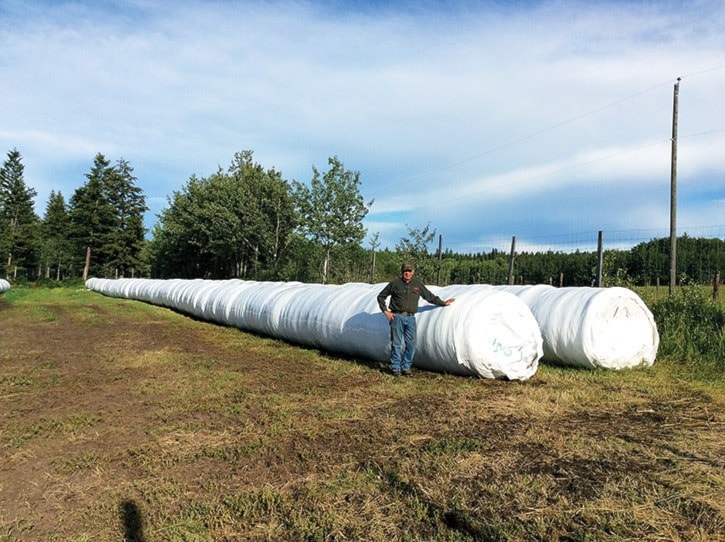Ranchers in the Cariboo Chilcotin are struggling to get their hay off this year with all the rain the area’s been receiving in June and July.
“It’s raining right now,” said John Herrick from his Pablo Mountain Ranch in Springhouse Monday where he operates a cow-calf operation with about 230 cattle. “From the first of July until now we’ve probably had about three inches of rain and it’s rained every day, but two.”
Some days it doesn’t rain very much, but other days it does.
Just before the Williams Lake Stampede at the beginning of July, his ranch managed to make about 80 hay bales. Since then they have been making silage bales instead because silage can have a higher moisture content than hay.
“Hay has to be around 12 to 15 per cent moisture while silage bales can have 40 to 50 per cent moisture,” Herrick said.
Herrick has been ranching for 45 years and said 2016 has been one of the wetter years.
“It is a very odd year. We started out dry and had a warm April. Early May it looked like we were in for a drought almost, then it turned around and has been raining ever since.”
For Herrick it isn’t as bad for the long-term because his ranch can make round bale silage and so far has put up about 800 silage bales.
It is more costly because they have to use a tube liner to wrap the bales.
“We have a machine that wraps the bales in plastic to preserve them. You make the bales smaller but they are still heavy because they have way more moisture content.”
The pastures do look good because of all the rain, but he said he feels badly for the smaller ranches that aren’t set up to make silage.
“Now the crops are all getting over ripe and the food value will be less in them,” Herrick said, adding it is tough for someone to have to go and purchase the extra equipment to make silage.
“For the last 20 years we have been doing some sort of silage and in the last four the round bale silage because the machine you use can be used for either making silage or making hay,” Herrick said.
“Before we had a different system where we chopped the standing crop. This way you use the same equipment, but you do need some way to wrap the bale.”
Last year’s weather was almost the complete opposite and was so dry, Herrick added.
